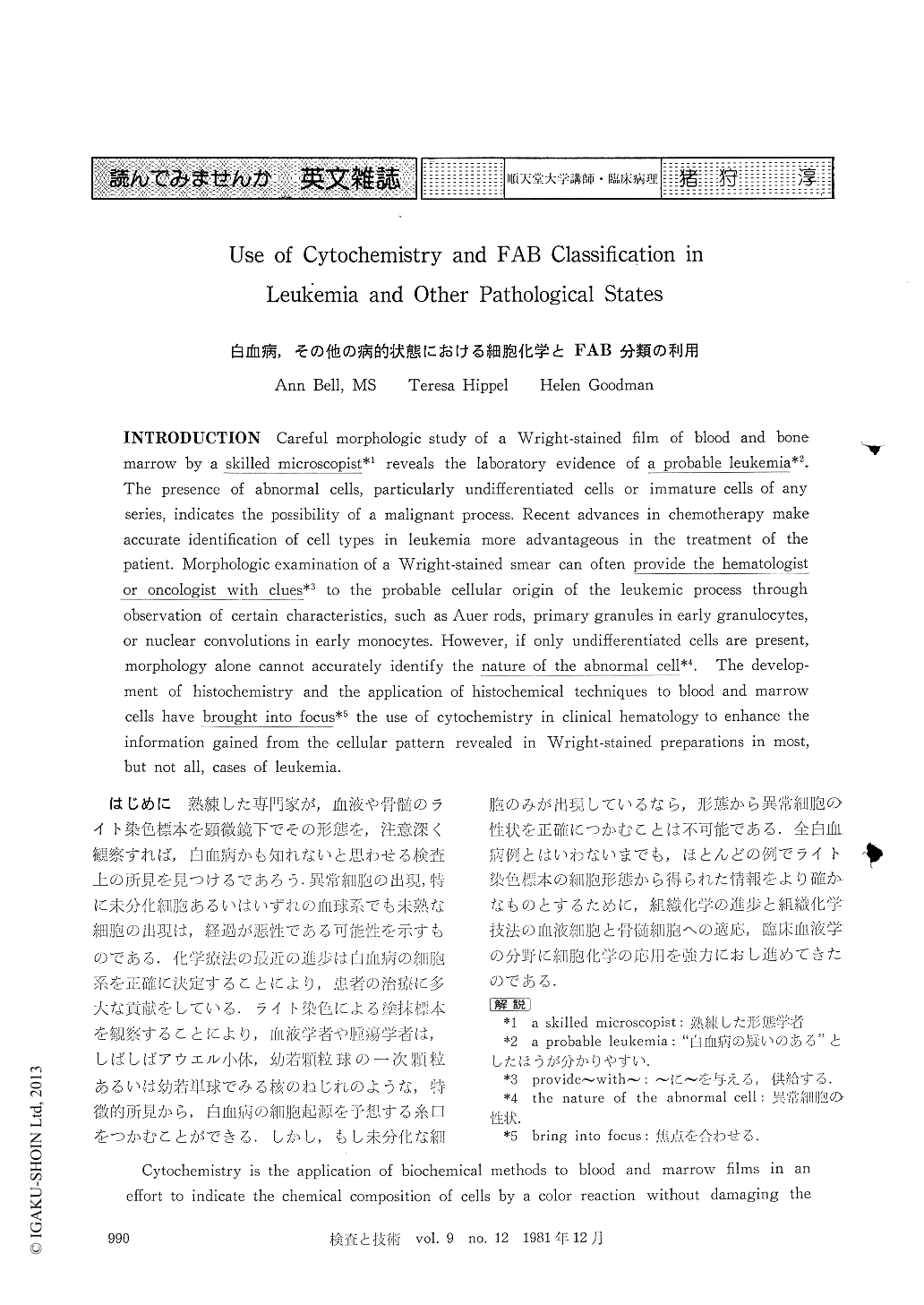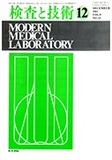Japanese
English
- 有料閲覧
- Abstract 文献概要
- 1ページ目 Look Inside
はじめに
熟練した専門家が,血液や骨髄のライト染色標本を顕微鏡下でその形態を,注意深く観察すれば,白血病かも知れないと思わせる検査上の所見を見つけるであろう.異常細胞の出現,特に未分化細胞あるいはいずれの血球系でも未熟な細胞の出現は,経過が悪性である可能性を示すものである,化学療法の最近の進歩は白血病の細胞系を正確に決定することにより,患者の治療に多大な貢献をしている.ライト染色による塗抹標本を観察することにより,血液学者や腫瘍学者は,しばしばアウエル小体,幼若顆粒球の一次顆粒あるいは幼若単球でみる核のねじれのような,特徴的所見から,白血病の細胞起源を予想する糸口をつかむことができる.しかし,もし未分化な細胞のみが出現しているなら,形態から異常細胞の性状を正確につかむことは不可能である.全白血病例とはいわないまでも,ほとんどの例でライト染色標本の細胞形態から得られた情報をより確かなものとするために,組織化学の進歩と組織化学技法の血液細胞と骨髄細胞への適応,臨床血液学の分野に細胞化学の応用を強力におし進めてきたのである.
INTRODUCTION Careful morphologic study of a Wright-stained film of blood and bone marrow by a skilled microscopist*1 reveals the laboratory evidence of a probable leukemia*2. The presence of abnormal cells, particularly undifferentiated cells or immature cells of any series, indicates the possibility of a malignant process. Recent advances in chemotherapy make accurate identification of cell types in leukemia more advantageous in the treatment of the patient. Morphologic examination of a Wright-stained smear can often provide the hematologist or oncologist with clues*3 to the probable cellular origin of the leukemic process through observation of certain characteristics, such as Auer rods, primary granules in early granulocytes, or nuclear convolutions in early monocytes. However, if only undifferentiated cells are present, morphology alone cannot accurately identify the nature of the abnormal cell*4. The development of histochemistry and the application of histochemical techniques to blood and marrow cells have brought into focus*5 the use of cytochemistry in clinical hematology to enhance the information gained from the cellular pattern revealed in Wright-stained preparations in most, but not all, cases of leukemia.

Copyright © 1981, Igaku-Shoin Ltd. All rights reserved.


